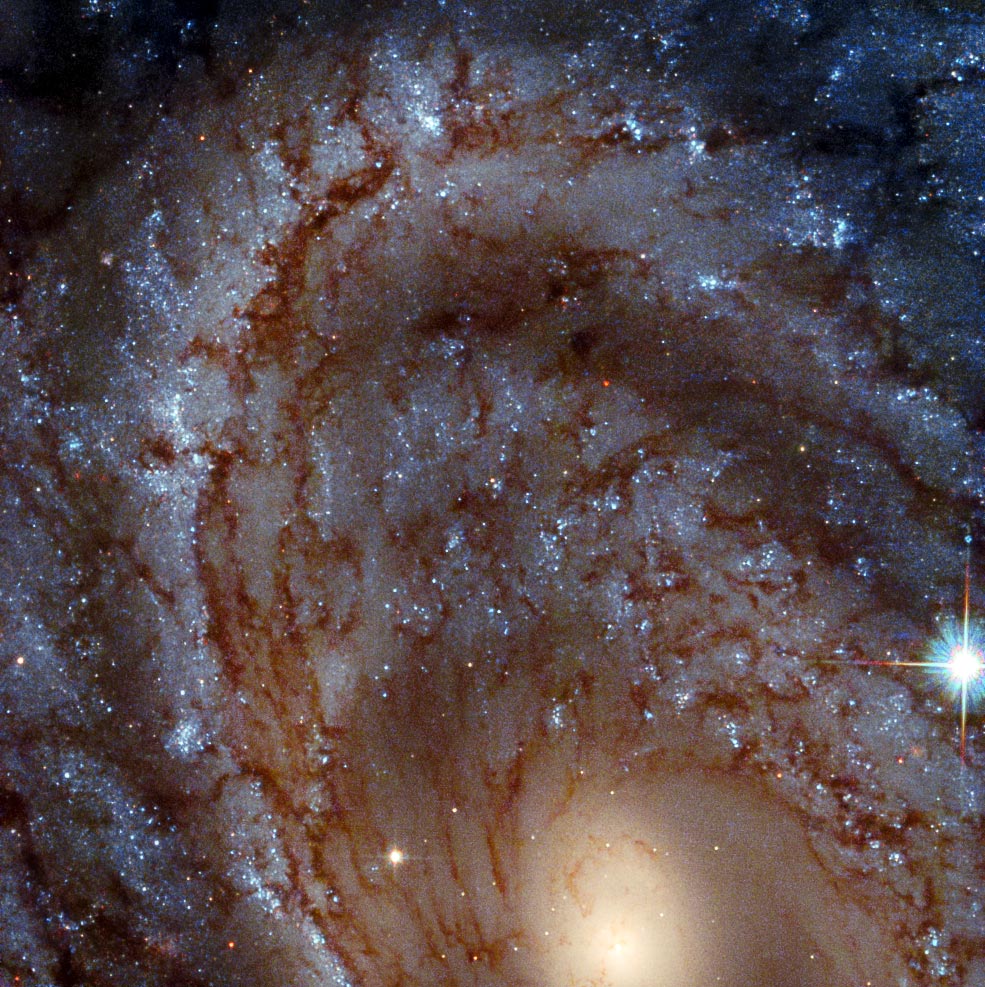

Image of the Hubble Space Telescope of the spiral galaxy NGC 4603, which is more than 100 million light-years away in the constellation Centaur (Centaur). Credit: ESA / Hubble and NASA, J. Maund
This image shows a close-up portrait of the magnificent spiral galaxy NGC 4603, which is over 100 million light-years away in the constellation Centaurus. Light streaks of young blue stars make up the arms of this galaxy, which wind lazily outward from the bright core. The intricate red-brown filaments that pass through the spiral arms are known as dust bands and consist of dense clouds of dust that hide diffuse starlight from the galaxy.
This galaxy is a familiar subject to Hubble. In the last years of the twentieth century, NGC 4063 was carefully and carefully tracked to find the signs of a special class of stars known as Cepheid variables. These stars have a brightness closely related to the period in which they darken and light up, allowing astronomers to accurately measure how far they are from Earth. Distance measurements from Cepheid variables are essential for measuring the farthest distances in the Universe and were one of the factors used by Georges Lemaître and Edwin Hubble to show that the Universe is expanding.